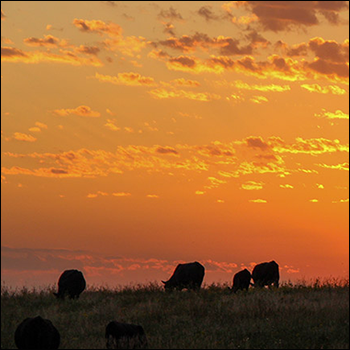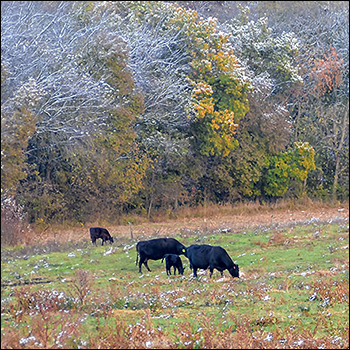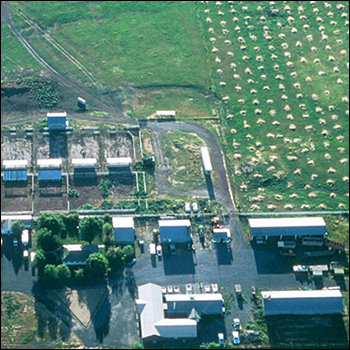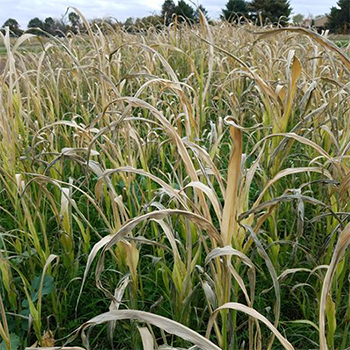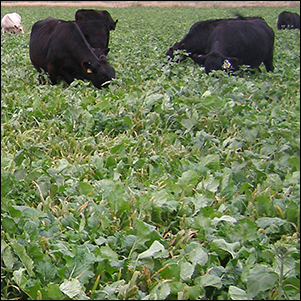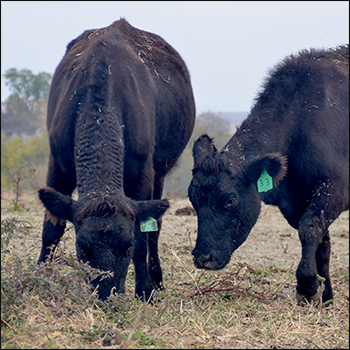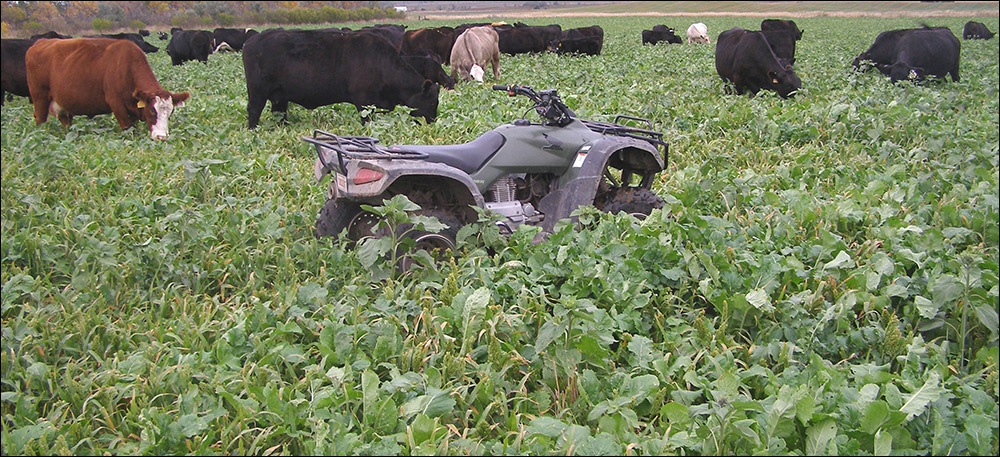
Extend Your Grazing Season
There are ways to extend fall and winter grazing with various crops.
On a dry year, native pastures and hay aftermath may not produce enough forage in regions without irrigation. One strategy to increase forage for grazing is to grow annual crops, which may include cereals and brassicas.
Kevin Sedivec, professor of range science at North Dakota State University, says crops traditionally used as cover crops in a farming system — turnips, radishes and other brassicas in combination with cereal crops and warm-season forages — can often supply late-summer and fall grazing, sometimes well into winter. These can be planted in early to mid-summer. Other options for late fall and winter grazing include winter cereals.
To extend grazing this fall, the best option might be crop residues.
“Last year at our research station, we grazed crop residues until February. You have to remember, however, that usually the quality is low, and you need protein supplement,” says Sedivec.
Cattle need some kind of forage for optimal rumen function, and a protein source can be added.
“We grazed wheat stubble, cornstalks and oat stubble for four months, saving $40,000 in hay for our 450 cows,” he says.
If you don’t supply a protein supplement, cattle can’t eat enough low-quality forage to maintain themselves since the rumen fills up too quickly. Then the cattle lose weight.
“Our cattle last year actually gained weight on crop residues, thanks to the protein supplement. In the West this year with the drought, the main options will be crop residue, or a failed crop — maybe wheat or corn that didn’t grow well enough to harvest,” Sedivec says. “Just about any type of failed crop can be eaten by cattle. Ruminant animals can utilize these if you can keep the rumen happy with enough protein to feed the ‘gut bugs’ so they can multiply and break down the feed.”
Sedivec says they planted a cover crop in June that didn’t grow well due to lack of moisture. September rainfall came and, luckily, those cover crops will add at least a month of grazing in the fall.
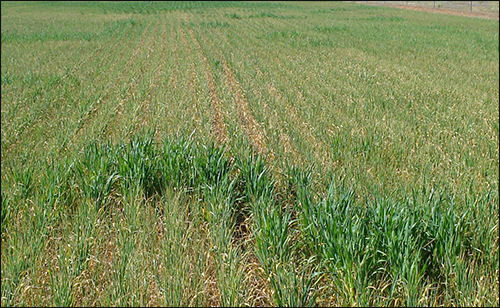 “Just about any type of failed crop can be eaten by cattle. Ruminant animals can utilize these if you can keep the rumen happy with enough protein to feed the ‘gut bugs’ so they can multiply and break down the feed,” says Kevin Sedivec. [Photo by Kevin Sedivec] |
There are some interesting seed mixes that a person can use today for annual or permanent pasture that weren’t available in years past. Some of these might do well in your region or climate.
“We try to make sure we have a nice mix of cool-season and warm-season grasses, plus a broadleaf like a brassica. We don’t necessarily need a legume in a late-season cover crop because it usually won’t pay for itself, but we might use one in a full-season cover crop. A legume needs more days to grow and is also the most expensive seed in the mix, so sometimes I don’t include a legume at all, just to save costs,” he explains.
If you are using a cover crop to extend grazing, a brassica (turnip, radish or kale) is high in protein, so you wouldn’t need a legume or a protein supplement. There is enough fiber from the warm-season grass and protein from the brassica for a balanced diet, says Sedivec. He does warn that it should be seeded in June or July.
Whatever a cow can graze this year will work — adding protein if necessary — but he recommends looking at winter cereals for next spring.
“What we’ve found most cost effective, in terms of production and early grazing, is winter rye. You can graze it earlier than anything else. If you are looking for something to put up for hay, the forage-variety winter wheats are better, because they are higher-quality and higher in palatability. They are usually about three weeks behind the rye,” says Sedivec.
“Winter triticale can fit in there, as well. It’s usually about three to five days later than the rye, but at least two weeks ahead of winter wheat, and has higher quality than rye — but is more expensive,” he admits.
When grazing any drought-stressed crop, test for nitrates. He says almost all of their crops were high in nitrates this year. The levels varied, but some were high enough that without testing, cows could die from nitrate poisoning. Keep pregnant cows off of drought-stressed crops, and test before grazing, he recommends.
Editor’s note: Heather Smith Thomas is a cattlewoman and freelance writer from Salmon, Idaho. Lead photo by Mark Hayek.
